All posts under this category will have post dates removed.

Drug Availability on Social Media
NOTE: Since April 2020, we have been offering every one of our presentations and trainings in virtual modalities (e.g., Zoom, WebEx, Teams). Reach out if you need specifics, as we’ve optimized the way we engage with our audiences from afar! This training will help parents, educators, and other youth-serving adults understand how online environments can contribute to […]
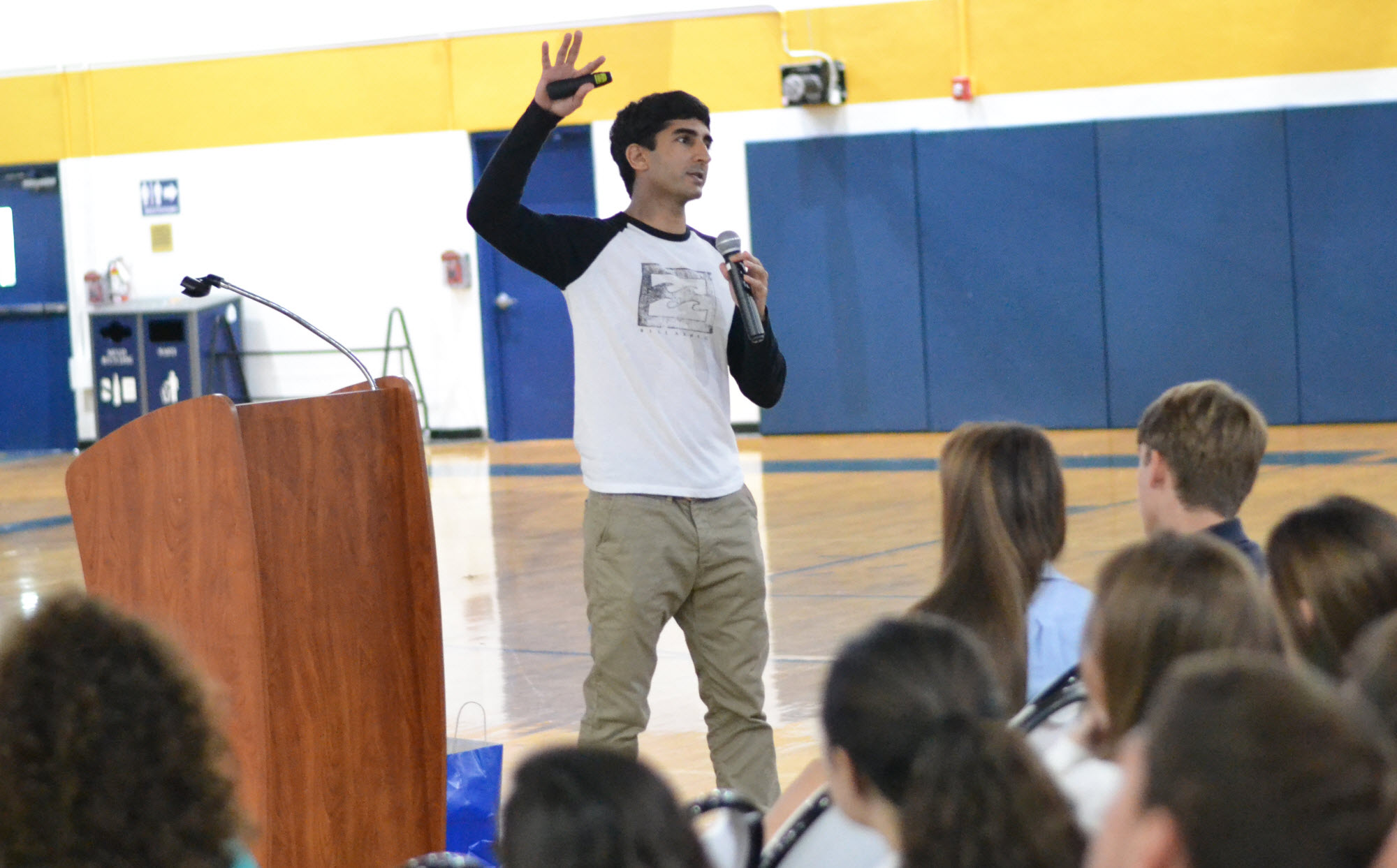
What is Cyberbullying?
“What is Cyberbullying?” is one of the most frequent questions we are asked because many know what it is when it happens, but have trouble wrapping succinct descriptive words around it. Formally, we define it as “willful and repeated harm inflicted through the use of computers, cell phones, and other electronic devices” (from Bullying Beyond […]

Chat/Text Abbreviations & Acronyms
This updated resource helps parents and educators understand the abbreviations and acronyms commonly used by young people in text messages, social media, and online chat rooms. It is meant to serve as a bridge between generations, making it easier to monitor and understand youth conversations online, particularly when concerns about cyberbullying or online safety arise. Citation […]

Social Media, Cyberbullying, and Online Safety Glossary
In our Glossary below, we define the terms you need to know in the realm of social media, cyberbullying, and online safety, so that you are increasingly informed about technological jargon as you work with the youth under your care.(You can also download a distributable PDF of our Social Media, Cyberbullying, and Technology Terms Glossary). […]
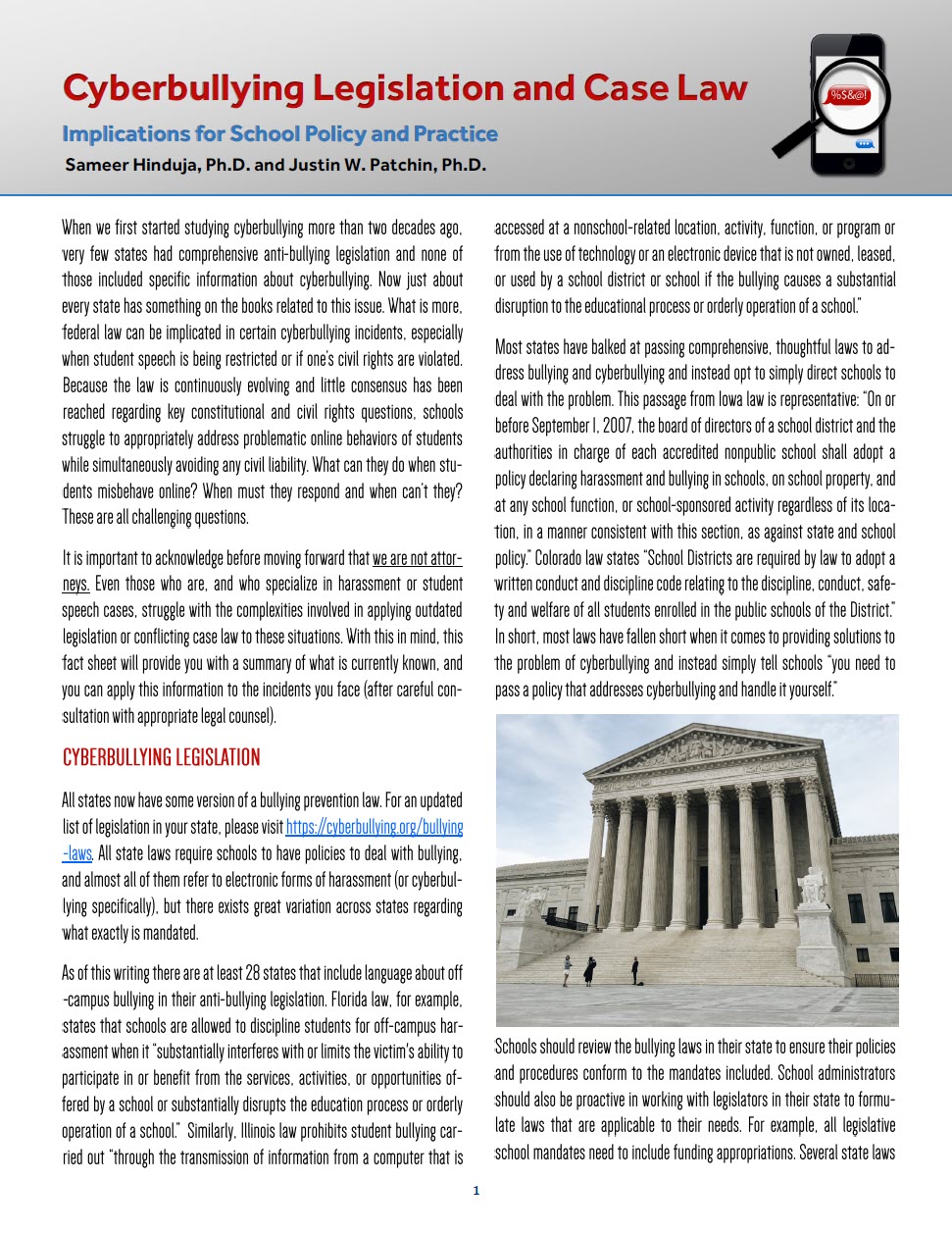
Cyberbullying legislation and case law: Implications for school policy and practice
This Fact Sheet provides a summary of important court cases and pending legislation that can help school administrators evaluate and improve their current cyberbullying policies and procedures. Hinduja, S. & Patchin, J.W. (2024). Cyberbullying legislation and case law: Implications for school policy and practice. Cyberbullying Research Center. Retrieved [insert date], from https://cyberbullying.org/cyberbullying-legal-issues.pdf Download PDF
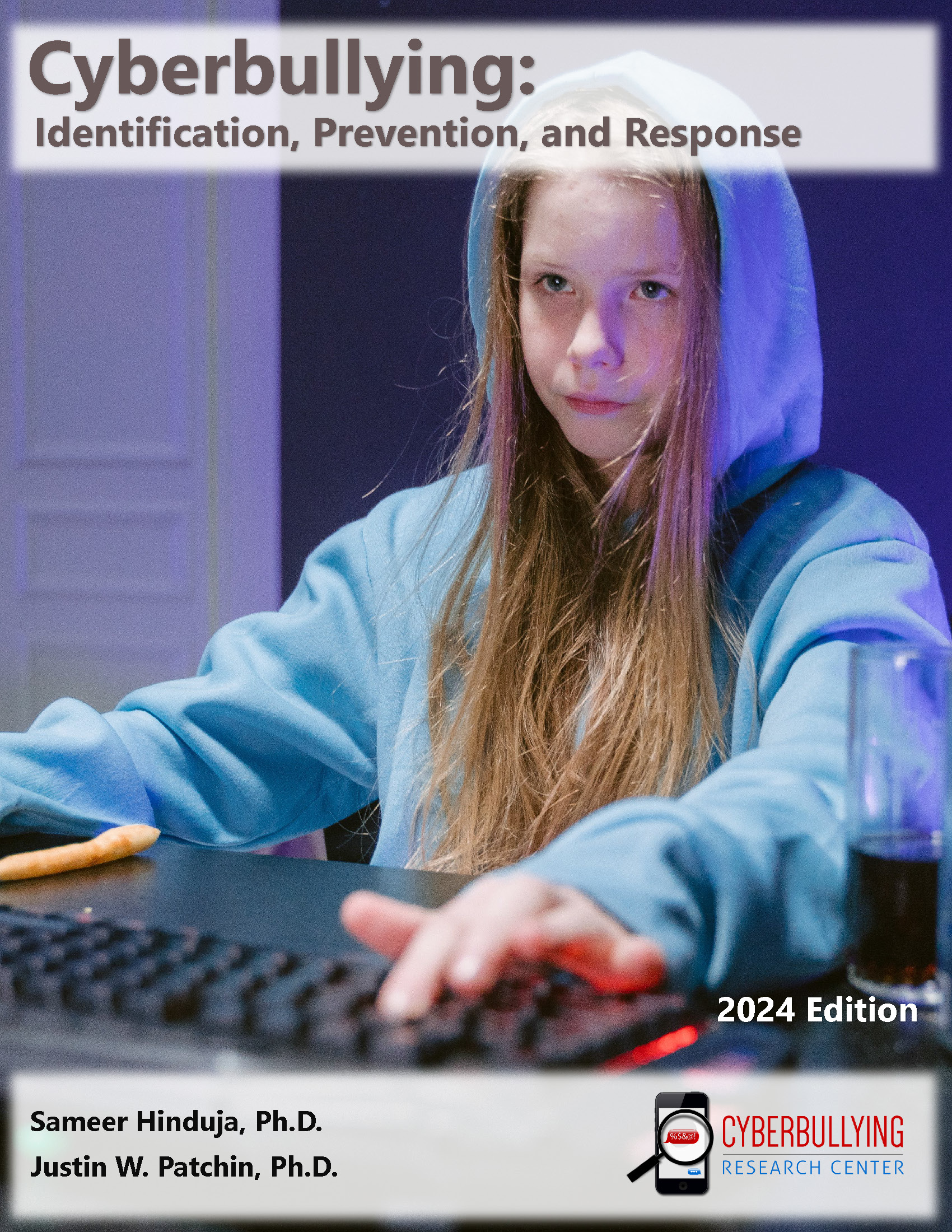
Cyberbullying Fact Sheet: Identification, Prevention, and Response
UPDATED for 2024! This detailed guide is a nine-page summary – filled with as much useful information as possible – to equip educators, parents, and other youth-serving adults to spot cyberbullying, respond to it appropriately and meaningfully, and to prevent its future occurrence among those they care for. If you only have time to read […]
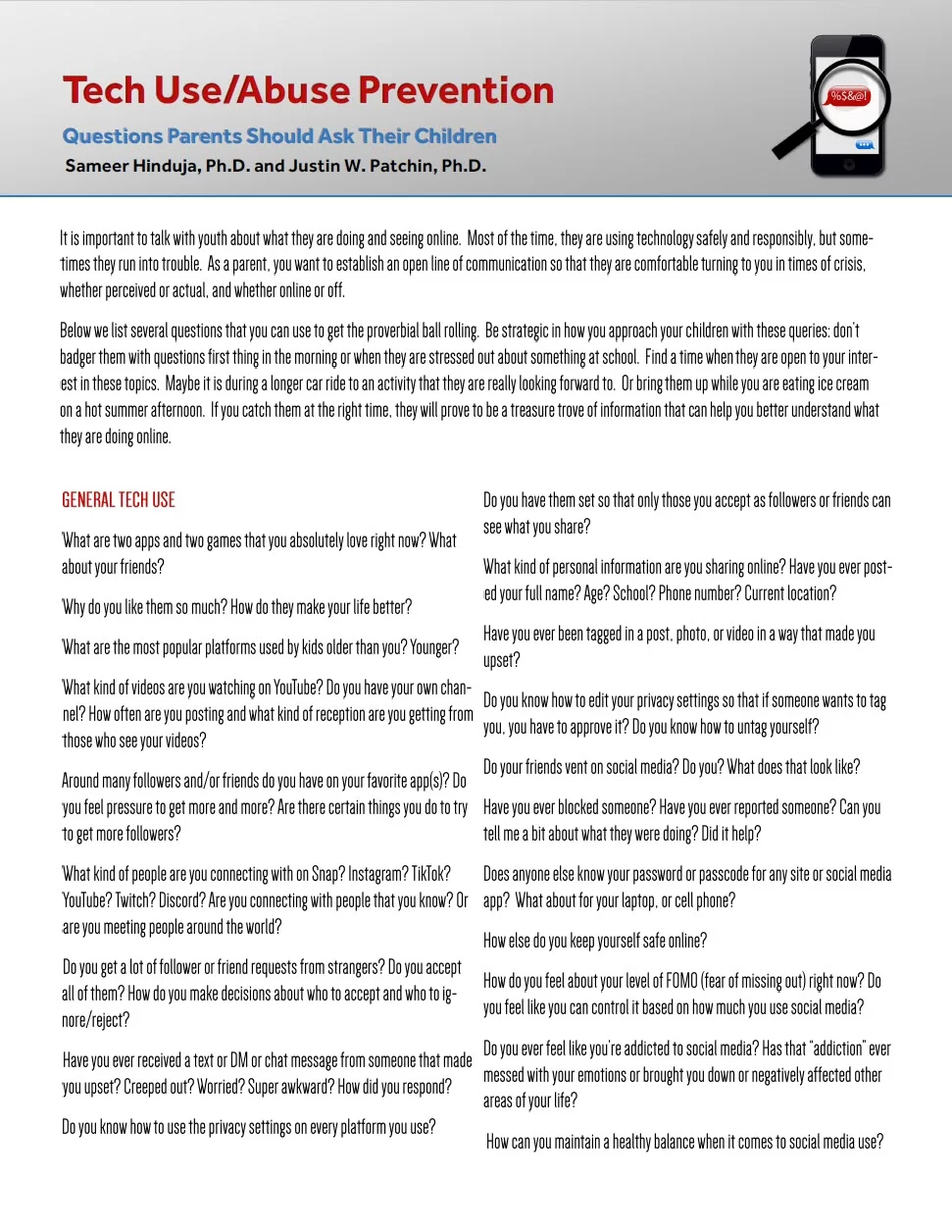
Tech Use/Abuse Prevention: Questions Parents Should Ask Their Children
Spanish Translation Available Here It is important to talk with youth about what they are doing and seeing online. Most of the time, they are using technology safely and responsibly, but sometimes they run into trouble. As a parent, you want to establish an open line of communication so that they are comfortable turning to […]
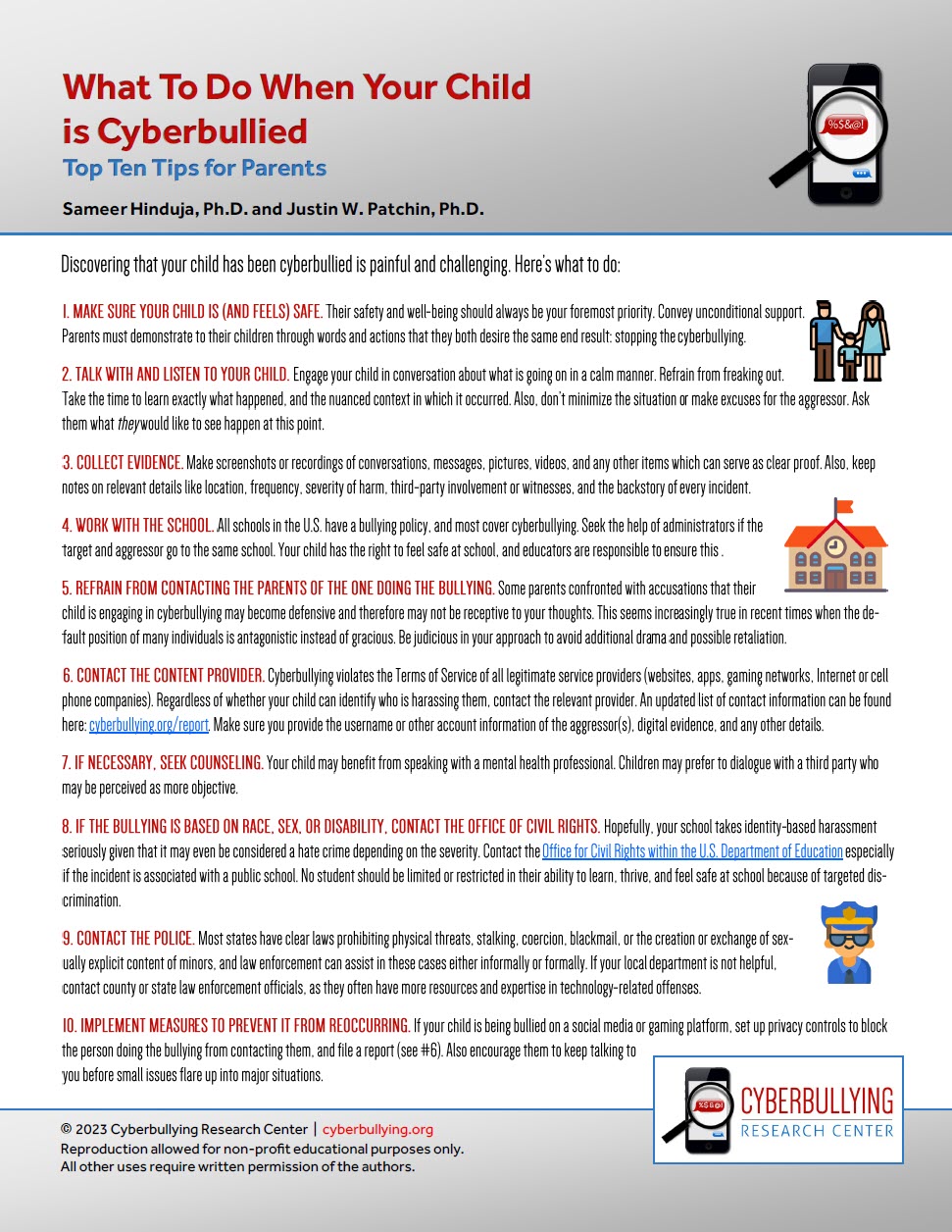
What To Do When Your Child is Cyberbullied: Top Ten Tips for Parents
(For a formatted .pdf version of this article for distribution, click on the image above [or click here]). Spanish Translation Available Here Discovering that your child is being cyberbullied is painful and challenging. Here’s what to do: 1. MAKE SURE YOUR CHILD IS (AND FEELS) SAFE. Their safety and well-being should always be your foremost […]
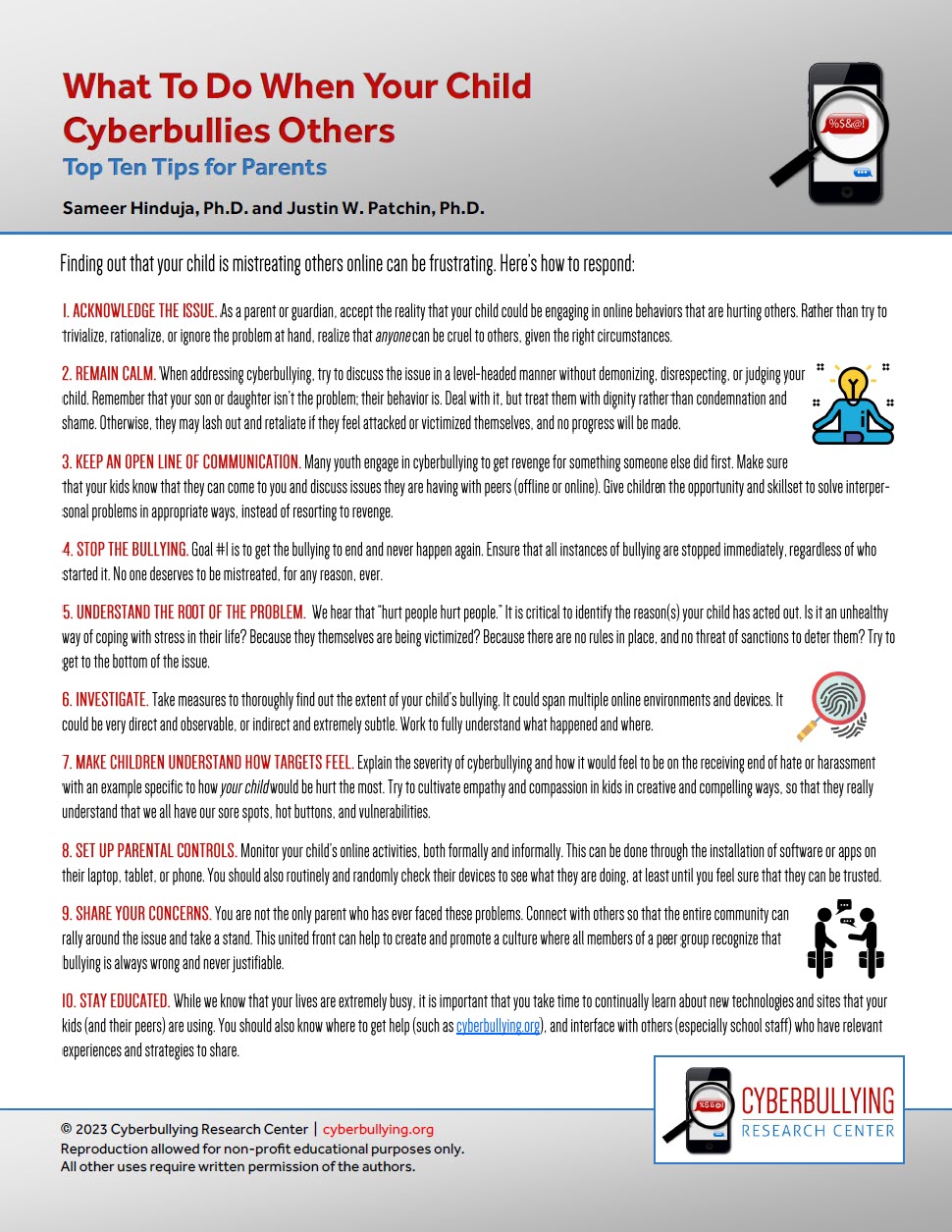
What To Do When Your Child Cyberbullies Others: Top Ten Tips for Parents
(For a formatted .pdf version of this article for distribution, click on the image above [or click here]). Spanish Translation Available Here Finding out that your child is mistreating others online can be frustrating. Here’s how to respond: Citation information: Hinduja, S. & Patchin, J.W. (2023). What To Do When Your Child Cyberbullies Others: Top […]

Social Media, Youth, and New Legislation: The Most Critical Components
In my last piece, I discussed how some legislation in various US states has been proposed without careful consideration of the contributing factors of internalized and externalized harm among youth. More specifically, I expressed concern that the complexities surrounding why youth struggle emotionally and psychologically demand more than simplistic, largely unenforceable solutions. We recognize that […]

